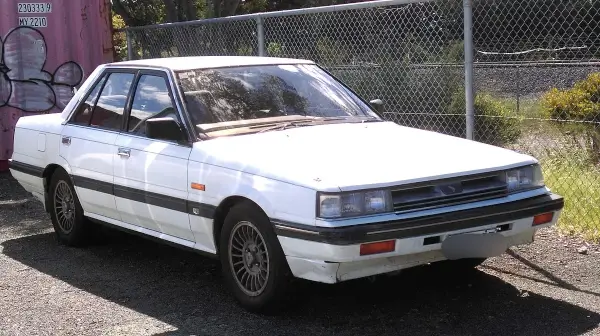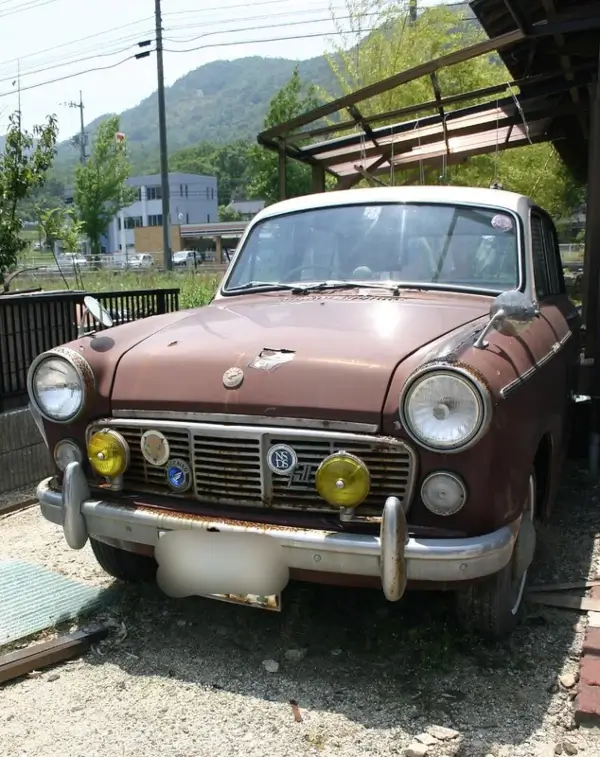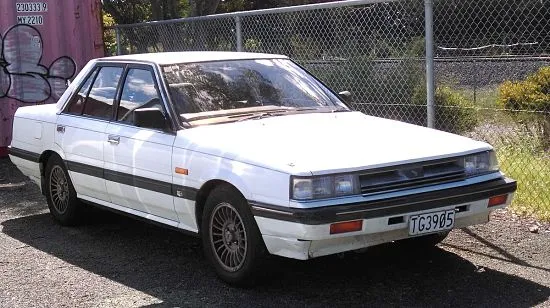Nissan Tyres

Classic Nissan Tyres
On the following pages, Longstone Classic Tyres give classic tyre fitment recommendations for Rolls Royce cars.
If your Rolls Royce is not listed, don't panic! Please give us a call on:
01302 711 123
or
Email: sales@longstonetyres.co.uk
Nissan History
Nissan was established in July 1911. However, it was not formed as Nissan, but rather as the Kaishinsha Motor Car Works by Masujiro Hashioto, and was Japan's first automotive company. The DAT was the first vehicle made and was introduced in 1914. It was called DAT since it was an abbreviation of the surnames of the company's investors. Because there was no market for passenger automobiles in Japan at the time, the firm first focused on trucks. Instead, they developed military vehicles as well as smaller utility trucks.

Commercial activities were halted during World War I, and when they reopened, they produced light vehicles and trucks under the brand name Lila. DAT Motors created a smaller automobile named the Datsun Type 11 in 1931. It was known as Datsun because it was the 'son of DAT.' The holding firm Nihon Sangyo was created in 1928, and the name Nissan was derived from an acronym used on the stock exchange in the 1930s. Tobat Casting and Hitachi were also included by Nissan.
DAT joined Tobata Casting in 1931 and was eventually incorporated with the business in 1933. Tobata Casting was controlled by Nissan, making this point the beginning of Nissan's automobile manufacture. Tobata Casting developed their vehicle components branch in 1934 and created a new subsidiary known as Nissan Motor Co. Ltd. The Yokohama production factory was finished the following year, and 44 Datsuns were transported to Asia, Central and South America. That same year, the first automobile built using an interconnected assembly system rolled off the assembly line. Nissan began by producing vehicles, aircraft, and engines for the Imperial Japanese Army.
Surprisingly, Datsun began building Austin 7s under licence in 1934. This was not just the beginning of Datsun's worldwide achievement, but also the pinnacle of Austin's international success. Nissan and Austin signed a formal arrangement in 1952 that allowed Nissan to construct 2,000 Austins and sell them in Japan under the Austin name. Nissan built 20,855 Austins between 1953 and 1959. Nissan utilised Austin patents to build their own modern engine designs, and in 1967, Nissan launched the Nissan L engine, which was comparable to Mercedes-Benz OHC designs but was a wholly unique engine built by Nissan. The Datsun 510 was powered by this engine. The 510 earned Nissan the recognition it deserved in the global sedan market. Then they introduced the Datsun 240Z sports vehicle, which confirmed Nissan's world-class standing.

During the Korean War, Nissan was a significant manufacturer of automobiles for the US Army. After it ended, there was a strong anti-communist fervour in Japan, and the union that organised Nissan's staff was aggressive. The corporation was in financial trouble, and when pay discussions arose, Nissan took a strong approach, sacking hundreds of workers. They were subsequently immersed in a protracted 100-day strike. Several union officials were detained by US occupying forces and the Japanese government, and the union eventually ran out of striking funding and was crushed. A new union was created, and its head proposed saving 2,000 jobs.
Nissan chose to expand into global markets after continuing success with Austin and the Datsun 240Z sports vehicle. The Datsun Bluebird debuted at the 1958 Los Angeles Auto Show, and Nissan established the Nissan Motor Corporation USA only two years later. They maintained its success with models such as the Datsun Fairlady roadster, the 411 series, and the Datsun 510. Nissan has grown to become one of the world's leading vehicle exporters by 1970. The 1973 oil crisis prompted buyers in the United States to choose smaller budget automobiles, and Nissan responded by developing the Nissan Sunny. The "Chicken Tax" of 1964 imposed a 25% tax on commercial automobiles imported into the US. However, Nissan, Toyota, and Honda began to develop facilities in the United States. Initially, the American facilities primarily produced trucks, but they have subsequently produced the Altima, Pathfinder, Maxima, and LEAF.
Nissan and Ford shared products in Australia as part of the Buton Plan, a government-backed programme. As a result, the Nissan Pintara was renamed the Ford Corsair, while the Ford Falcon was renamed the Nissan Ute. In America, Nissan and Ford collaborated to promote the Mercury Villager and the Nissan Quest, which were practically the same but with a few variations. In Europe, they also collaborated to manufacture the Nissan Terrano II and the Ford Maverick. Nissan was in serious financial trouble in 1999, so they formed an agreement with Renault. The Renault-Nissan Alliance, formed in March, was the first of its type, comprising a Japanese and a French automaker.
The Renault-Nissan Alliance launched a joint venture with Russian Technologies in December 2012 with the goal of becoming a shareholder in AvtoVAZ, Russia's largest automobile firm and owner of the country's best-selling brand, Lada. The acquisition was finalised in June 2014. Nissan is now the world's largest maker of electric vehicles. They are well-known for their electric city vehicles, the Nissan Leaf being their best-selling model. It is also the world's best-selling highway-capable plug-in electric car, with over 240,000 sold globally as of September 2016.
